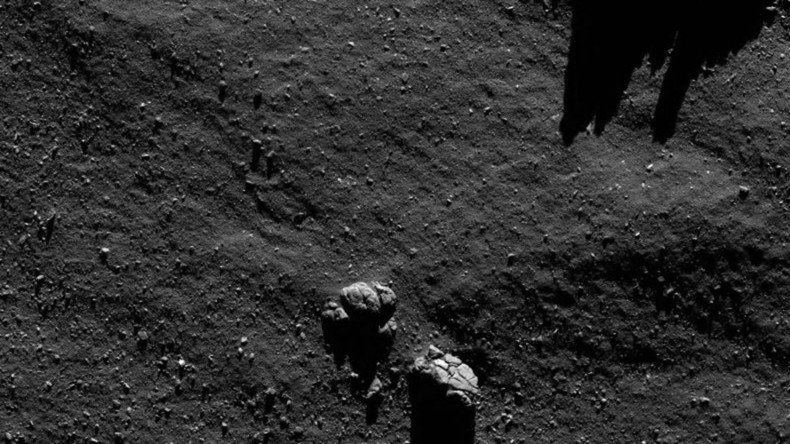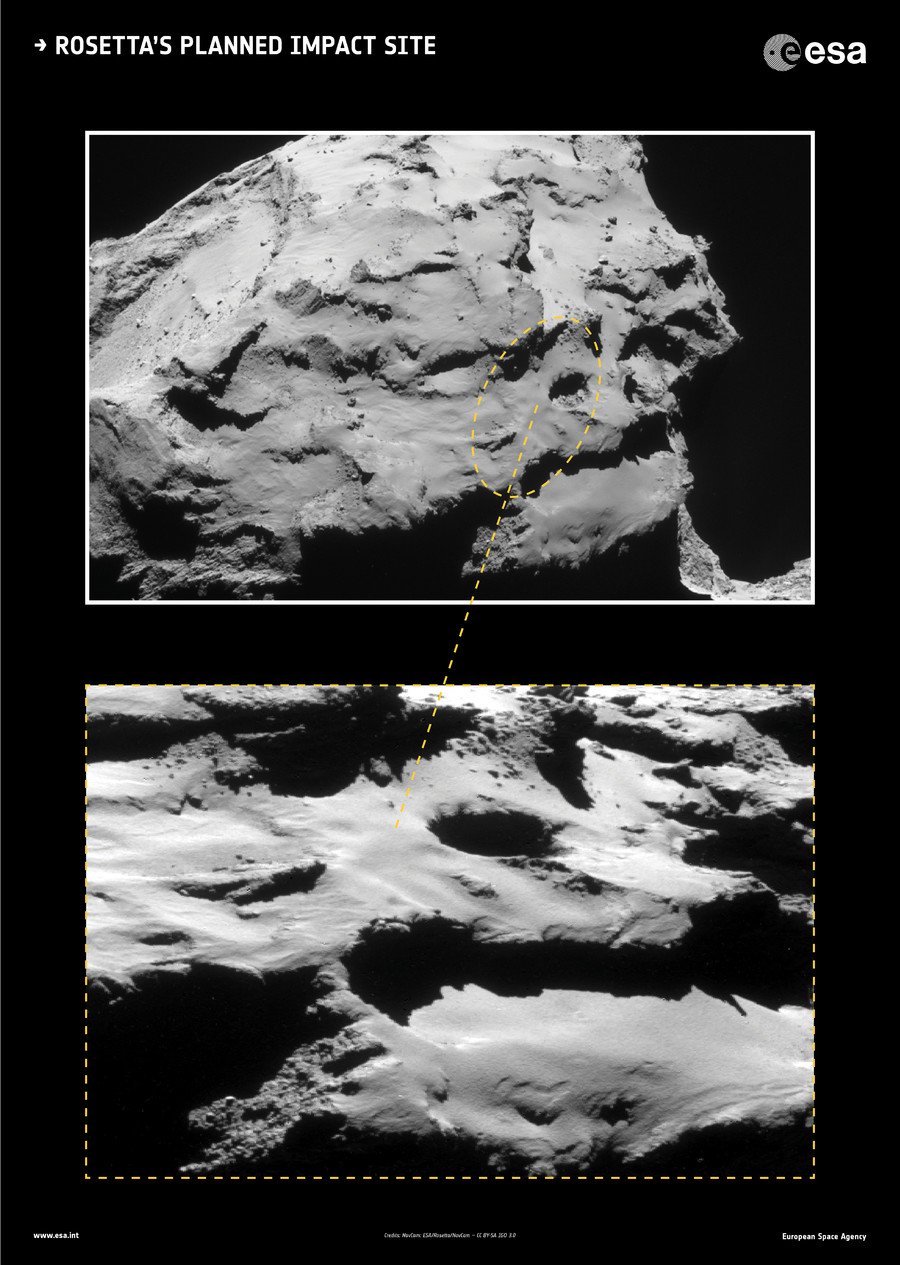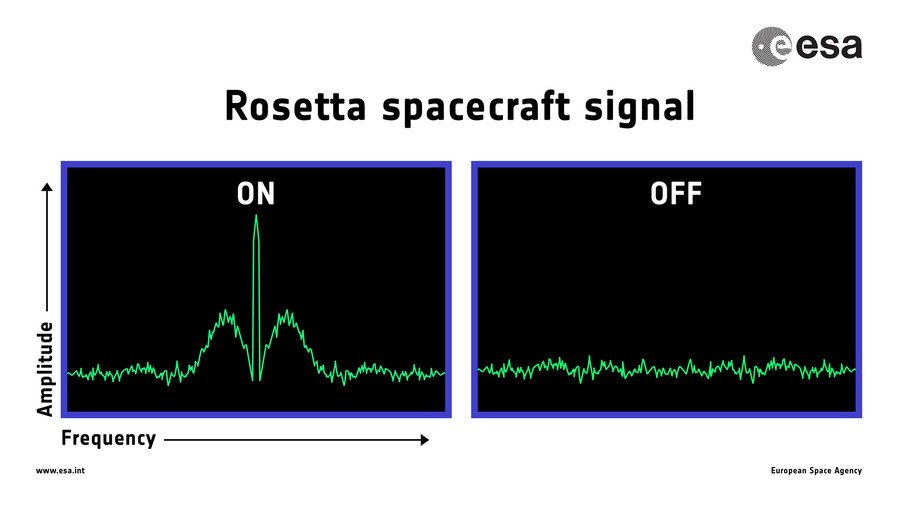Rosetta spacecraft prepares for final touchdown ending 12 year historic mission (PHOTOS, VIDEOS)

The Rosetta spacecraft is preparing for its last showdown when it’s expected to collide with a comet after spending the last two years orbiting the space rock and more than 12 years in space.
Rosetta has covered an incredible 6 billion kilometers during its historic space odyssey which included the first time a spacecraft orbited a comet and the first time a probe landed on a comet’s surface.
The end of Rosetta’s mission comes a month after the orbiter located the lost comet lander Philae, and the find came almost two years after Philae crash crashed into the comet in November 2014.
Now Rosetta will follow Philae’s footsteps, taking its resting place on the opposite side of the comet to the famous lander. The $1.5 billion ESA spacecraft is preparing for its descent to the surface of the the 67P/Churyumov-Gerasimenko comet, gathering some up-close scientific observations before making impact.
#LivingWithAComet RPC perspective: a LOT of electons & ions, spectra & plasma density measurements at #67P! https://t.co/hUCljT0QUGpic.twitter.com/CPyUTg0gEC
— ESA Rosetta Mission (@ESA_Rosetta) September 29, 2016
Rosetta will descend on the surface of Comet 67P/C-G in what the ESA hopes will be a ‘controlled impact’. Once Rosetta lands, it will shut down forever, ceasing contact with Earth.
The spacecraft’s last challenge is to send back final observations, such as high-resolution images and sensitive measurements of gas and dust, as quickly as possible before transmission is permanently lost. A final photo will be taken of 67P just 15 seconds before impact.
Scientists are combining my data with ground-based observations to learn more not only about #67P but also other comets! #CometLandingpic.twitter.com/Vu35JZ71Lu
— ESA Rosetta Mission (@ESA_Rosetta) September 29, 2016
READ MORE: Rosetta spacecraft finds ‘vital ingredients’ of Earth life in comet dust
The spacecraft will set down in the Ma’at region on the small lobe of the comet, as it this spot is considered “scientifically very exciting”, according to the ESA. The area is home to a number of active pits, measuring over 100 meters across and 50 meters deep, and Rosetta’s touchdown is directed at a smooth area between two of them.

(1/2) COSIMA, MIDAS & VIRTIS have completed their measurements at #67P & will be off for #CometLanding. Check out these incredible stats! pic.twitter.com/HgjdUnXdfG
— ESA Rosetta Mission (@ESA_Rosetta) September 29, 2016
The spacecraft is set to begin its ‘collision manoeuvre’ at 20.50 p.m. GMT Thursday at an altitude of about 19 km, and impact is expected on Friday at 10.40 a.m. GMT, though it may land up to 20 minutes before or after that time slot.
Confirmation of the craft’s touchdown is not expected until some 40 minutes later, as that’s the expected time for the final signal to reach Earth.
As soon as Rosetta hits the surface, its main systems will be turned off, including the altitude and control systems, as well as the main transmitter. A signal will confirm to mission controllers that impact has occurred.

Software to enable ‘passivation’ will be activated approximately 10 hours before impact; any re-activation is impossible after the systems have shut down on impact. There is a risk, however, the spacecraft could switch off before impact and before returning its final data.
Earlier today...@Rosetta_OSIRIS wide-angle camera got this lovely view of #67P from 22.9 km. Tomorrow #CometLanding! https://t.co/4yO2WoesP0pic.twitter.com/dHiyh0knVc
— ESA Rosetta Mission (@ESA_Rosetta) September 29, 2016
ESA will facilitate a livestream and provide live updates from mission control in Darmstadt, Germany on Friday during Rosetta's grand finale.
Scientists say the spacecraft’s contribution of data, measurements, photos and dust grain collections has been invaluable to the study of comets and leaves a wealth of findings that will take researchers decades to analyze.












